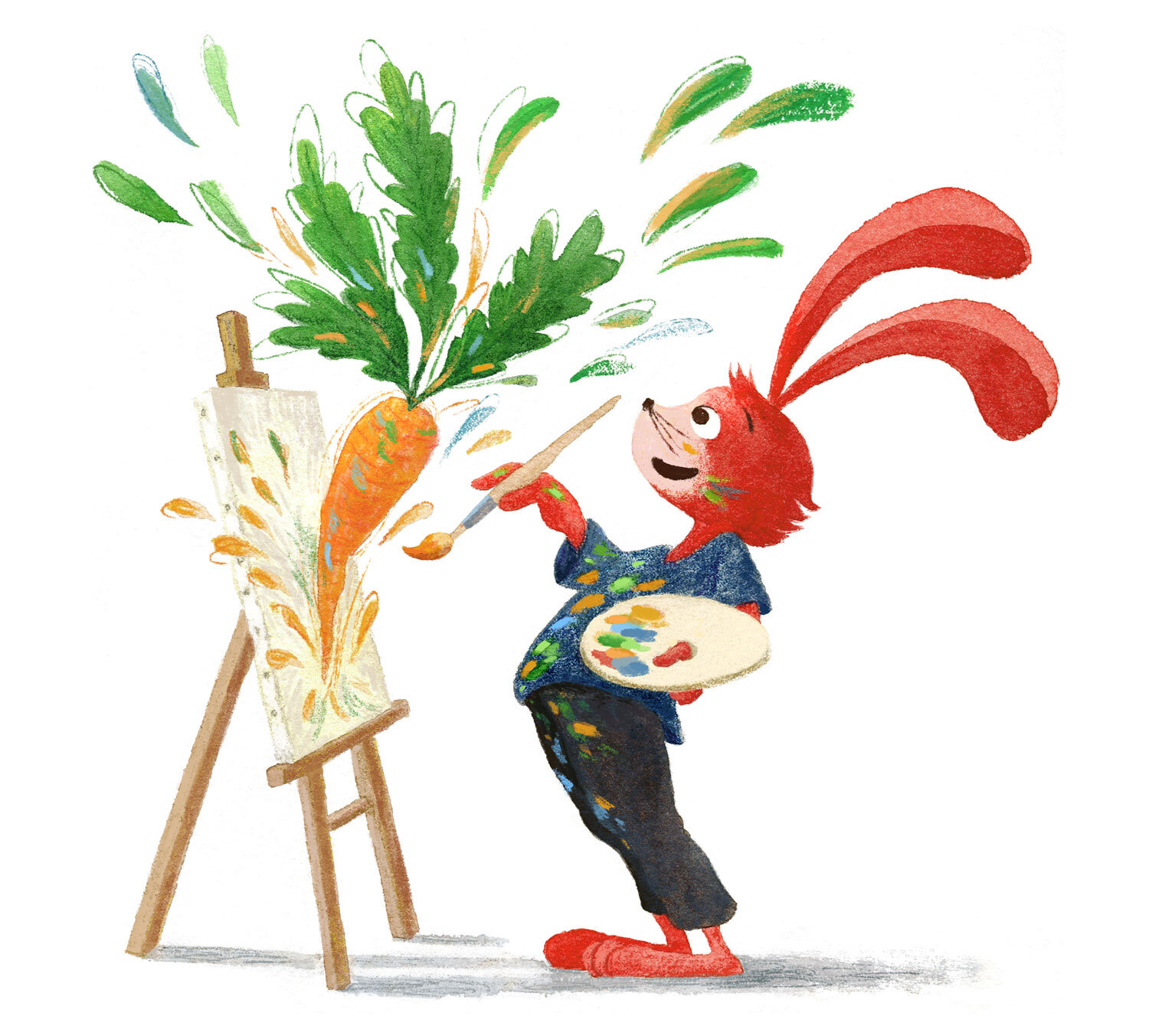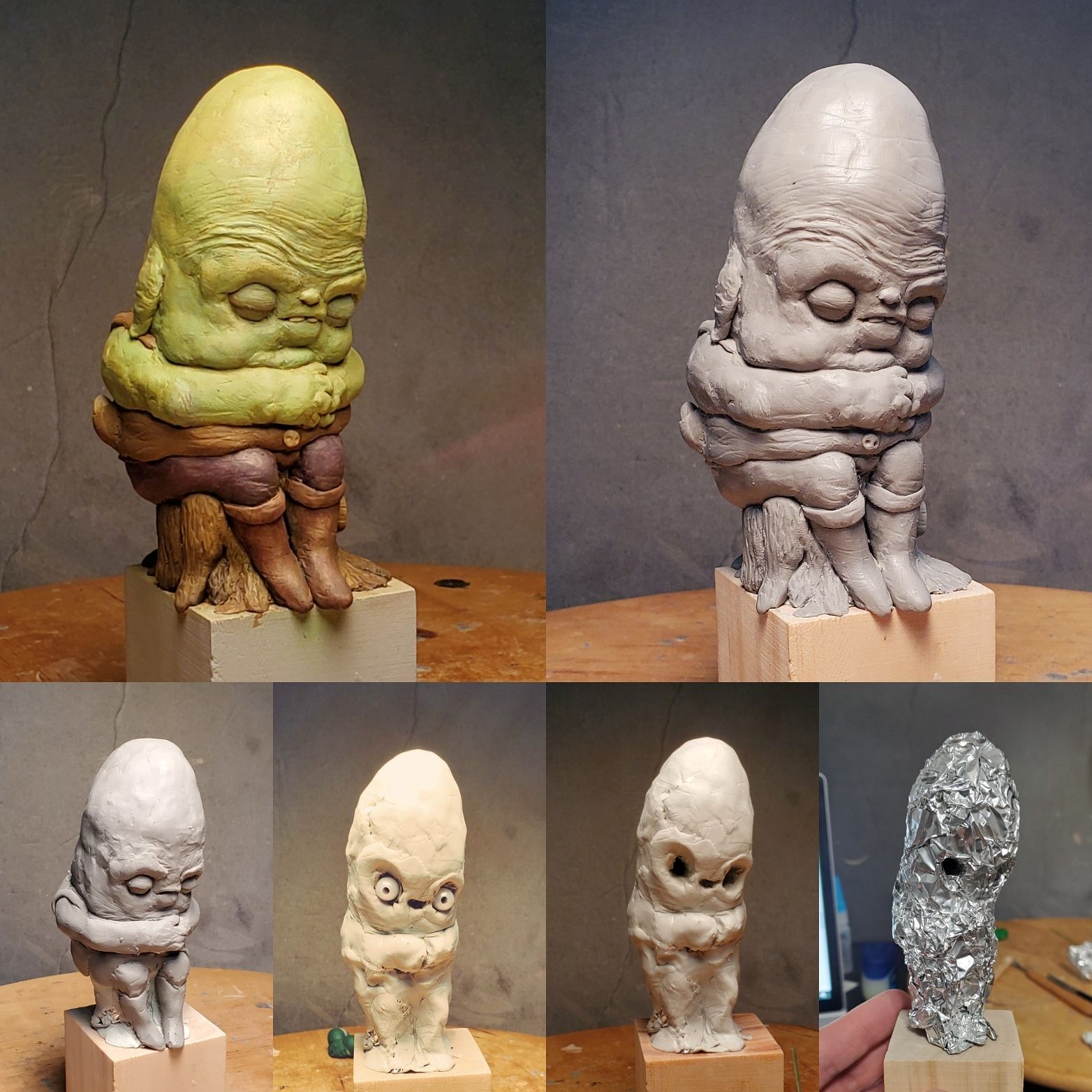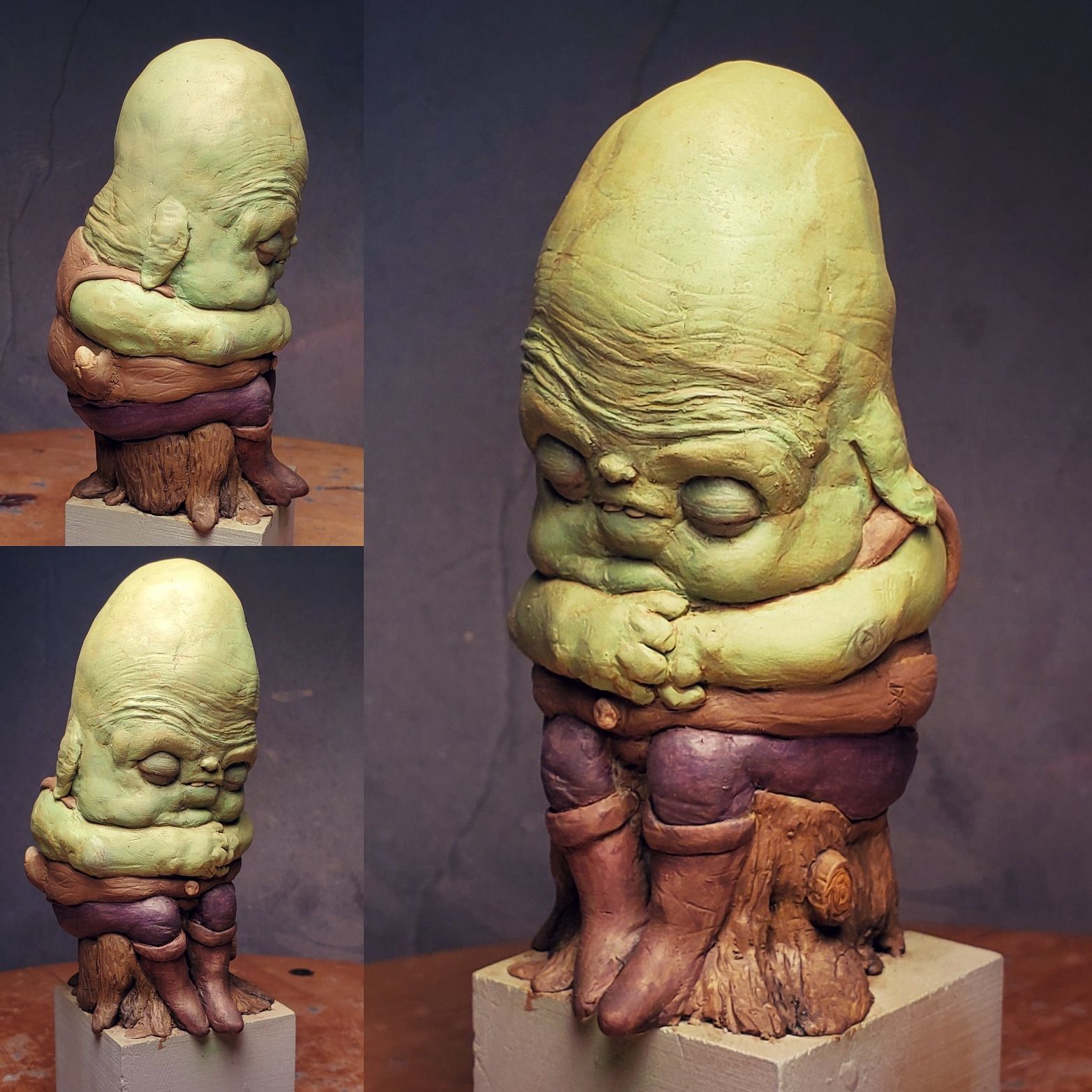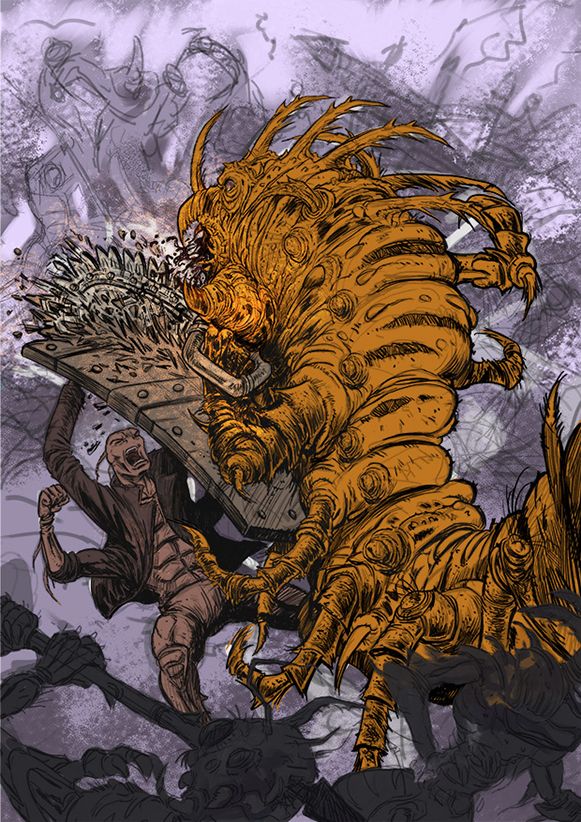How We Actually Make The Art
-

Art by Li XinHow do you actually make an image, from idea to sketch to finished product? There’s so much that goes into making an art career take flight, sometimes we need to go back to basics and examine the nitty gritty details of making an image. Do you have a process? Do you plan? What steps do you need to take to deliver quality work? Jake Parker, Lee White, and Will Terry discuss the various methods and approaches you can take in making a finished piece, list out their various quirks and habits, and offer a simple but time-tested framework to help you build your own robust and beautiful illustrations.
-
@Jake-Parker Nice! Looking forward to it.
-
Just listened to the episode! Excellent as usual - but I was JUMPING out of my seat when @Jake-Parker brought up Aphantasia - which is something I have been learning about and grappling with for some time now, ever since I saw artists on twitter talking about it.
It's been mind blowing to me because I do NOT see the images in my head - I do not really picture them. It's more of a concept that I then scribble and scribble until I get what I think the concept needs to look like down onto the page.
When I first was learning about Aphantasia I kept saying to people "but you don't actually see the images, because.. that's not possible: your eyes are closed so you'd see darkness... or your eyes are open so you are seeing what you're looking at.." and people just sort of shrug at me and say "well yeah but I definitely see the so- and-so." And I just don't get it.
So here we go, are any of you struggling with the idea of aphantasia? Can you see things in your minds eye? Or are you like me where you don't see anything, but you understand the concepts of these things and therefor sketch it out and bring your ideas and imaginations to life on the page before you?
For me it's almost like, because I can't see them but I am imagining what a cool concept that would be I have to get things down onto the page so that I can finally see them! (oh and @Lee-White I definitely make lists)
-
@EliaMurrayArt Aphantasia was discussed in this forum thread, that's how I heard about it. It really got me thinking about how I work in a way I hadn't before - so much about what we do goes unnoticed until we hear about another way. My struggle with this idea is that I feel I will never quite get to the point where I'm not editing an image so heavily. This frustrates me when I feel I can see an image in my head pretty clearly. They will never match up anyway, so I'm left scribbling and scribbling to see what the concept will look like, just like you. But what skill am I missing here that doesn't leverage what I can see so clearly in my imagination? Shouldn't the process reflect what I can already see? One thing that helps me is to write more, like Lee White mentioned. It's just difficult to be disciplined in such a messy process as I have. There are never enough thumbnails and writing so I need some sort of bootcamp. That would have been the Ideation class, but I couldn't put in the time

Very good episode, thanks you guys! I will be listening to it a few more times.
-
@Jake-Parker @Lee-White @Will-Terry This was awesome. I love watching you guys on YouTube.
 I was just wondering if any of you had some tips for traditional painters going from that thumbnail to the bigger piece? I have struggled so much with this and it seems like all of you guys have just dealt with this problem digitally. I don’t have a digital option, though, so I either just make a lot of tiny art, or out of frustration, skip the thumbnails all together. I just try to rough it out big on throw-away paper to settle on a design. Thumbnails are important, but if you can’t get that image to go bigger, if feels like a giant disappointment. This is a HUGE hang up for me. Any advice for someone who is doing it all traditionally?
I was just wondering if any of you had some tips for traditional painters going from that thumbnail to the bigger piece? I have struggled so much with this and it seems like all of you guys have just dealt with this problem digitally. I don’t have a digital option, though, so I either just make a lot of tiny art, or out of frustration, skip the thumbnails all together. I just try to rough it out big on throw-away paper to settle on a design. Thumbnails are important, but if you can’t get that image to go bigger, if feels like a giant disappointment. This is a HUGE hang up for me. Any advice for someone who is doing it all traditionally? -
@Pamela-Fraley I asked a friend of mine that question recently and he said he will put this thumbs into the computer and print it out large, then he rubs the back of that print out with charcoal/pencil. He then places the charcoal side down on his new piece of large paper and traces over the image side. Essentially tracing his own carbon copy.
-
@carlianne that’s a good idea. It kinda limits me to 8.5x11 but it’s bigger than my usual 4x6.
 ️ I’ve seen people transfer images using chalk before.
️ I’ve seen people transfer images using chalk before. -
@Pamela-Fraley @Pamela-Fraley if you want something bigger than 8.5x11, you can use software to enlarge your drawing and print it across a couple of pages which you then line up and tape together. I use a lightbox to transfer it to watercolor paper. I’ve used the graphite transfer for smaller pieces but the lightbox is easier for a larger piece. (I’m on my iPad so can’t tell you the name of the software right now but can find it out for you if you need it.)
-


Here's my workflow for sculpting thicker stuff that requires tinfoil to bulk out the armature.
-
@kylebeaudette dang these are getting more and more amazing.
-
Loved hearing about your different/similar workflows, especially with colouring. I struggle with colour constantly, and up til the last 12 months employed mostly a 'comic book colouring' technique, but I'm trying new stuff depending on what I want to achieve.
Really appreciate the tips and tricks you share, I'll have to try using generic swatches then desaturating and colour balancing, that sounds like a cool thing to try. Top stuff. -
I am coming to realise how super important the thumbnail part is after doing exactly what was talked about in the podcast, I mean working a piece until it's finished and then having my husband say, that thing looks weird. I just get so carried away once I start a piece. The problem I have with thumbnails is when I do take the time and do 50, like Lee suggests, I have trouble choosing one out of the 50, sometimes I think one is pretty good and then I can only really see what's wrong with it once it's bigger. I suppose enlarging the original thumbnail could be a good way to remedy this...thanks for another great podcast

-
@demotlj a light box, like a projector? I’ve thought about trying to track one of those down honestly! Maybe I should look at Facebook marketplace. Someone’s got to have one lying around.
I’m terrible with technology. But my husband is super techy. If you know the name of the program your friend uses, I can see if my husband could help me try that. I can’t imagine how nice it would be to work off of an actual thumbnail I like.
-
@Pamela-Fraley The name of the app is PosteRazor (I have a Mac) which is actually for printing posters but you can change the size of the desired final picture to whatever dimensions you want.
The lightbox I have is a Huion A2 Large Tracing Light Box. You can absolutely make your own -- my Dad made one that I used for years -- but I finally splurged and got a commercial one which (sorry Dad) works much better. If you do want to try making one, though, just google DIY light box for tracing and you'll find examples online.
-
@demotlj Thank you!!! That is so helpful.

-
Got inspired by the guys talking about their methods, so I'm trying something slightly different on my latest WIP. Jake was talking about colouring with the generic Photoshop swatches and then desaturating and adjusting colour balance, so I'm trying that with this one. It's a piece for a chapter book by author Jason Matheson for 9-12 yr old boys mainly, and I can only describe it as an insane dystopic insect fantasy with a dab of Mad Max thrown in. There's a lot left to go on this pic; lighting, tonal values, background, textures, but thought I'd share my progress if that's okay? (If I'm not supposed to post this here I'll delete it with apologies.)

-
@Rachel-Horne, I would say, don't try to pick one favorite out of 50. Pick 5 or 10 favorites. Compare & contrast them and see if they have things in common, or what you like about the different ones, etc.
In a design class I took, we would go through different steps:
Thumbnails or "thumbs": (around 1 or 2 inches, but Lee & Jake say they do them around 3 or 4 inches), scribbling as many ideas and versions of those ideas as possible (20 to 100) These are like stick figures, or Pictionary. Lee calls it a "thinking" stage, rather than a "drawing" stage. He also says that it's an ugly stage. It's for ideas, not something that looks good. I love what Will said: "Designing is different than drawing."
Rough Draft or "roughs": narrow them down to the top 5 or 10 and redraw them larger (like 3" to 5", half size, or even full size) & with more detail (Make sure to measure them out before drawing, to make sure it's accurate for the final size, or proportional to the final size.)
Comps (short for Comprehensive layout): pick the best rough (or up to 3), and draw it full size
Color comp: full size with color (we didn't have to do this for that class--I think it was all--or mostly B&W) You could also do this stage (or begin this stage) with your rough drafts.
Final: finished design
Of course, you can modify these steps (and the number of drawings for each stage) to what works for you (and your client, if applicable).
Enlarging the thumbnail, and adding more detail also works. I've used that method when working in Procreate on my iPad.
-
@Pamela-Fraley, I've also seen people use projectors (either an old-school overhead projector, or a modern projector used with a computer).
-
@EliaMurrayArt, I usually don't see things in my mind. Rarely, I can almost see things—never clearly, though. Sometimes a little more, and other times—so faint it's almost not seeing anything at all. But usually nothing.
If you ask me to close my eyes and imagine a beach or something, all I see is black. Sometimes I can remember the shapes of things without seeing an actual image—kind of like thinking about what it looks like, but not seeing it, and not using words either, but even that is difficult for me. I've tried to imagine something from a book, such as a character, but it doesn't work. Strangely, I've still had times when I watched a movie after reading the book it's based on and thought, "that's not how I imagined it".
It makes me kind of sad that I can't see things in my mind. It's amazing to me that someone (it sounds like most people!?) can picture an actual image—some as clearly as seeing a picture or photograph. That would be fun.
-
@Miriam I know exactly how you feel. I was fairly obsessed and devastate for a while when my husband explained to me his memories were like watching a projected movie when he closed his eyes.
At least we know it has no affect on our imagination or creativity!